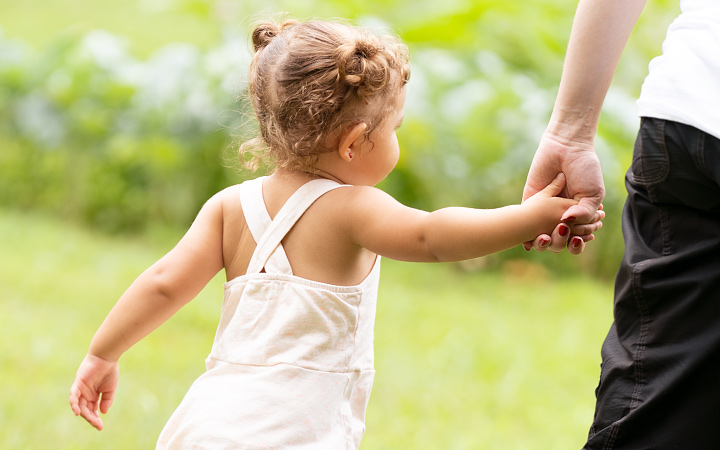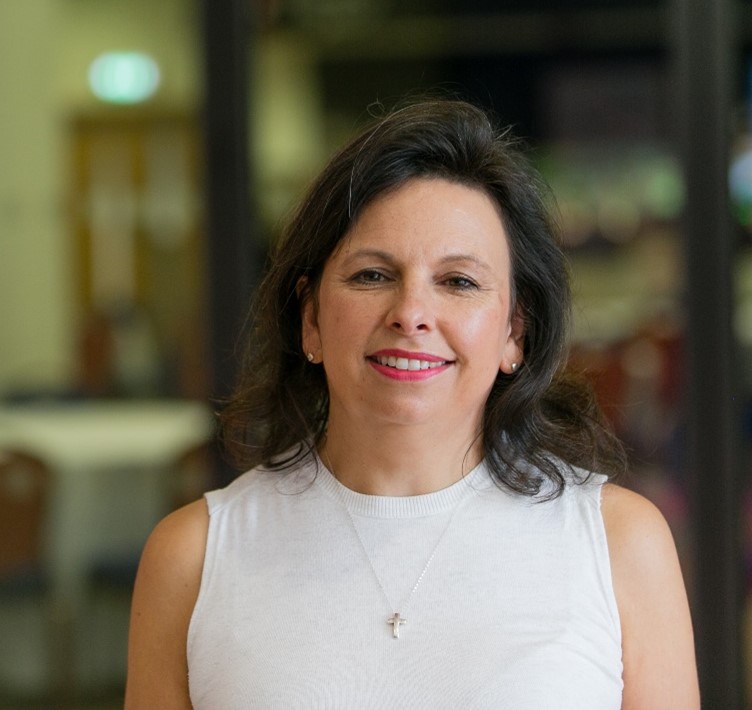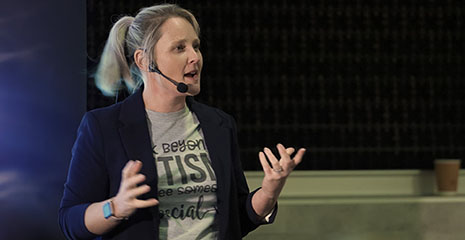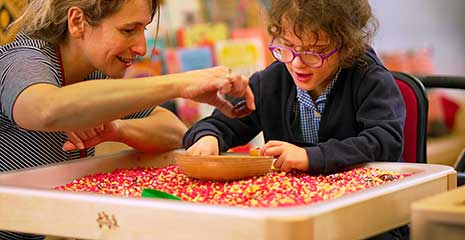Avoiding the storms
Five steps to support those who struggle to self-regulate.
| August 2023Change can be challenging
Change is a part of life, but for many children, change can be particularly challenging. The children we teach and care for have been through so much change in their little lives, and we are seeing the impact in our schools and settings. Children are joining us with less maturity, less language and less potential for self-regulation. Starting a new term or school is simply one more change, which can be unsettling. This change is out of their control. We become anxious and stressed when things become overwhelming or out of control. Children react to these strange feelings inside and behave in ways that are challenging for them and others around them.
Seeking out stability
Children will test boundaries; this can in itself be frustrating. But as a little fellow said when I asked him “why are you pushing the boundaries?”, his response was, “I am not pushing them, I'm just checking where they are.” This gave me pause to reflect and reconsider my response. He was seeking out stability to help him feel safe and secure.
Struggling with self-regulation
Spotting the signs of a child feeling unsettled and uncertain is one of the first steps we can take, even before self-regulation becomes an issue. Whether you work with the littlest children in an early years setting, in a school or in foster care, there are visual red flags to be on the lookout for.
Physical needs, sensory signals
When you rev up your radar, spotting the signs, even the subtle ones, is easier than it seems. Start before the day even begins by positioning yourself to watch the children as they arrive. What is their body language? What is the body language of their adult? The bigger movements and behaviours are easy to see, but the subtle signs of increased anxiety are the key. Is the child licking their lips, or are they glued to their grown-up? When seated, are they tapping their foot or fiddling with their fingers? Are they seeking out sensory soothing, rubbing something silky or chewing on their sleeve?
Anticipate
Noticing sensory signals doesn't necessarily mean taking action, but like watching the weather, it can help you to prepare and utilize the strategies you have available. Plus, it can provide insight into what the child is experiencing and help prevent their struggles from turning into problematic behaviours that need to be addressed. We also save a lot of stress for the children themselves. Everybody wins!
Picking up the pieces
So many of the strategies we have been handed historically are there to help us pick up the pieces after a problem has happened. The ABC approach – Antecedent, Behaviour, Consequence is still regularly recommended to us, by external experts and even education psychologists. The ABC strategy does not begin with “anticipate,” instead it encourages us to reflect on the “antecedent” – what came before the behaviour. It's interesting that the insightful, education psychologist who developed this strategy no longer recommends it. It still serves a purpose (to look back and analyse a crisis) but how much better is anticipating, spotting the signs and averting the crisis completely? I am privileged to have worked with Dr Sonya Hinton EP over many years and, even into her eighties she is still passionate about getting it right for our children, helping them and the adults around them in fostering positive behaviours.
Sometimes, Sonya accompanies me during my training sessions and offers valuable insights. Her latest recommendation is called Anticipate, Avoid, Adapt, Respond, Repair. The “Avoid” was added to her model after a thought-provoking conversation we had.
Avoiding the storms – Jamie’s story
What's the best support for those struggling with self-regulation?
Here's an example: Six-year-old Jamie struggles with large numbers of children. His group is heading into the hall. He is closely observed by his key person who noticed him beginning to move his weight from one foot to the other. She considers her choices and responds, moving a little nearer to him. He is still stepping back and forth and his key worker watches his eyes flitting around the room looking at all the corners. He's looking for the exits.
Jamie has some underlying, deep-seated anxieties, connected to early childhood trauma. Currently finding stability with a foster family, his teachers and support workers are getting to know him. How to respond and repair when his behaviours become challenging, and more importantly, what he connects with, and what helps him come back to a place of calm. Rather than waiting for Jamie’s anxieties to develop into actions, his warm and wise key person takes Jamie’s hand, gives him a smile and a knowing nod and navigates with him to his favourite place –the fuse box! The storm is avoided by the calming activity of watching the wires, the switches and the fuses. Jamie's feeling of overwhelm subsides. When he is ready, his key worker has the opportunity to talk, firstly about the fuses and then about, what might help Jamie feel brave enough to step just inside the hall, one tiny step at a time. His key person would always be there, just close enough for him to connect with if he felt he needed it.
Finding the fuse box:
So by finding the fuse box, have we supported Jamie with his self- regulation? Just a little. Self-regulation is the longest journey, but with small steps along the way, supported by a known and trusted adult, children develop strategies and feel more secure. Jamie’s day was made a little better, and a little brighter, by the careful observation and sensible actions of his key person. This is one example of co-regulation; being there to support, not always to step in, and sometimes to step back while children begins to take those initial steps towards self-regulation.
Five steps for supporting those who struggle with self-regulation:
- Seeking out stability: When a child is pushing at the boundaries remember, they might just be checking where those boundaries are. They need to know in order to feel certain, safe and secure.
- Spotting the signs and sensory signals: Notice how a child comes into your setting; their behaviours before the day even begins and let the subtle sensory signals inform you.
- Physical needs: So many children need to run and have big movements. Are we allowing and embracing these?
- Anticipate and avoid: It is a strength to spot a storm before it breaks, and to avoid it is certainly not cowardly. Do the same for your children experiencing difficulties with their self-regulation.
- Finding the fuse box: Know what comforts them, calms them, consumes them in the most positive way and keep that strategy to hand for tricky moments.
Conclusion
As a teacher, parent and SENCo with young children, I still live and breathe these experiences. We are good at spotting the storms, but we may not notice how often we are using our skills and strategies to avert or avoid them.
Take time to reflect on your practice – there will be tiny things that you do that make a big difference and avoid so many storms on a day-to-day basis. Knowing your strategies and anticipating children's emotions will support your entire class, including those who struggle with self-regulation.










